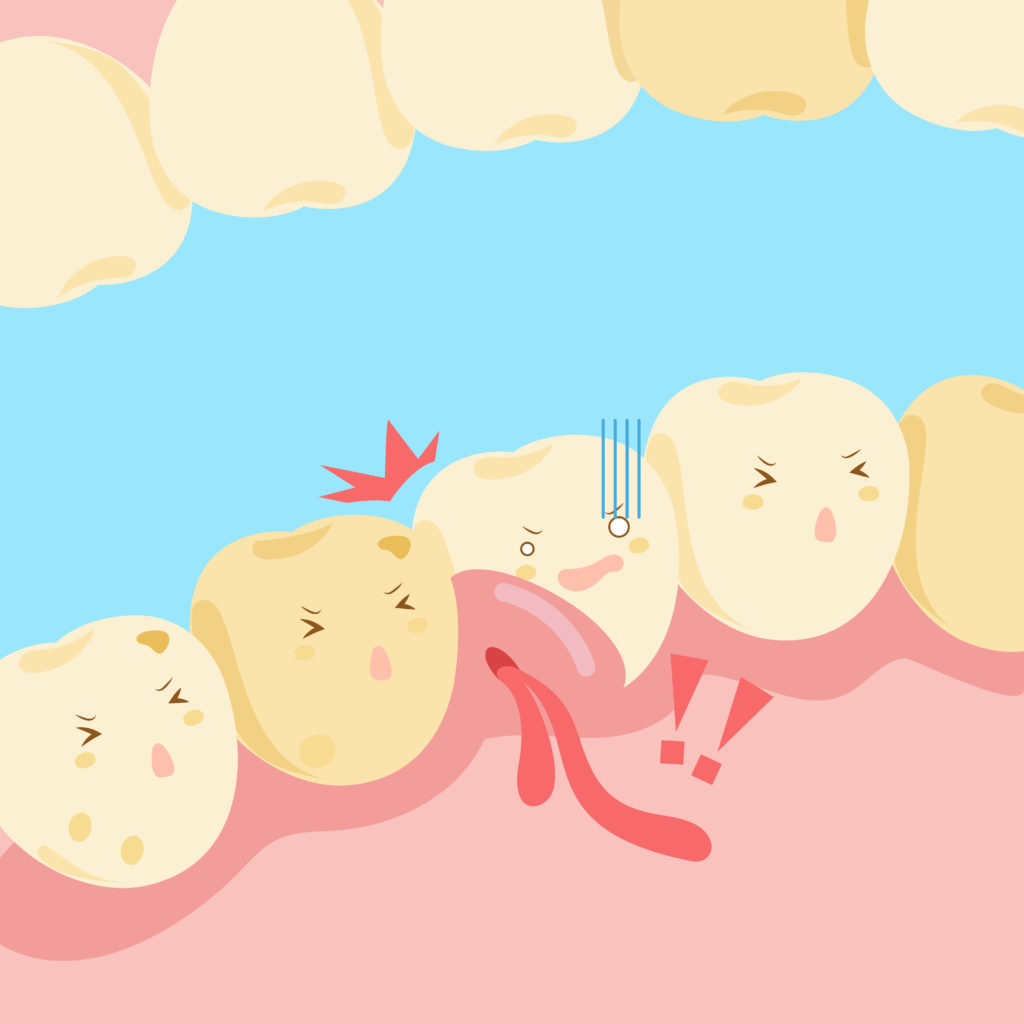You likely understand the importance of caring for the teeth of your children. However, it is less well-known that it is similarly important to care for the health of their gums. Bleeding gums are incredibly common. Some studies have indicated that as much as 60% of Americans have experienced their gums bleeding. It is important to understand how to care for your children’s gums and prevent many of the issues associated with gum disease. Here are some important things that you need to know about the causes and prevention of bleeding gums.
Gum Disease
Gum disease is the leading cause of bleeding gums. It typically starts as a less severe condition, called gingivitis. When left untreated, gingivitis often develops to a more difficult to treat condition called periodontitis. If you suspect that your child has gum disease, it is crucial to visit our office. We can ensure that the appropriate steps are taken to reverse gum disease and protect their oral health. Gum disease can lead to extreme amounts of damage to the teeth. When allowed to progress, it can even cause teeth to become loose or lost, which creates an additional host of problems. Ensure that the gums and teeth are being examined regularly to guarantee that you will be able to catch the signs in the early stages of gum disease, when it will be easier to reverse the damage. Keep in mind that though bleeding gums are an incredibly common sign of gum disease, they can also indicate other conditions. If gum disease isn’t present, the bleeding of the gums indicates another issue.
Causes of Gum Disease
Gum disease is most commonly caused by the accumulation of plaque around or at the gum line. Plaque provides the best possible breeding ground for bacteria, so they grow quickly along with the presence of plaque. This allows the bacteria to infiltrate beneath the gum line, where they set up residence in the gums. Food particles that are present beneath the gums also tend to lead to the development of gum disease. In addition, when plaque is allowed to accumulate, it can harden into a substance known as tartar. Tartar is far more difficult to remove and often requires a dental visit to remove effectively. If you don’t visit your dentist soon enough, it is likely that the problem will simply escalate. It is crucial to ensure that you remove plaque and food particles thoroughly from your teeth and gums to protect their health and prevent gum disease from occurring.
Additional Signs of Gum Disease

Bleeding gums aren’t the only sign of gum disease. It is possible that gums that are bleeding aren’t even an indication of the presence of gum disease. It is important to understand all of the relevant signs of gum disease to ensure that you bring your child into the dentist as quickly as possible when gum disease is present. In most situations, gum disease can be detected by examining the gums. Red gums, receding gums, and swollen gums are all signs that gum disease is present. Other symptoms that may indicate gum disease include loose teeth and bad breath. It can be difficult to identify signs of gum disease based on loose teeth in children, as it is possible that their baby teeth are simply ready to fall out. Pay more attention to the other signs when it comes to detecting gum disease in your child’s mouth.
Other Causes of Bleeding Gums
Gums that are bleeding don’t necessarily mean that gum disease is present in your child’s mouth. There are many other causes of bleeding gums. No matter what the cause is, you should consult with a pediatric dentist or doctor to protect the health of your child. Bleeding gums can be caused by many different bleeding disorders or vitamin deficiencies. If your child has a deficiency of vitamin K or C, it is possible that their gums will bleed. Hormonal changes can also cause gums to bleed. Bleeding gums are also common in individuals that have diabetes.
It is similarly important to ensure that teeth are being brushed effectively, but not overbrushed. When your child puts too much pressure on their teeth while they are brushing, it is very likely that the gums will bleed. This can also wear down the protective enamel layer of the teeth. It is crucial to ensure they are using a soft-bristled toothbrush and take adequate care of their teeth. It is also possible that their gums are bleeding because they don’t floss regularly. Once the gums have gotten used to regular flossing, they will stop bleeding.
Treatment for Bleeding Gums
Preventing gum disease will go a long way toward minimizing the likelihood of gums that bleed. It is vital to ensure that your child follows a great oral hygiene routine. They need to brush twice daily for at least two minutes in order to thoroughly remove plaque and food particles from the teeth and gums. It is also incredibly important to floss. In fact, flossing is one of the most effective ways to remove food particles that are present beneath the gum line. Visiting the dentist regularly, twice a year, can help to catch gum disease in the early stages and prevent it from escalating. Anti-gingivitis toothpaste can also go a long way toward fighting gum disease. Implementing mouthwash or drinking water after eating can help to flush out food particles. Improving their nutrition can also help to prevent gum disease in your child’s mouth.
Here at Mountain View Pediatric Dentistry, we are dedicated to protecting the health of your child’s smile. If your child is experiencing bleeding gums, it will be incredibly useful to schedule a visit with our office. We can help to identify the presence of gum disease and devise a plan for reversing any damage to the oral health. To obtain more information regarding bleeding gums and the impact it has on your child’s oral health, contact our experts at Mountain View Pediatric Dentistry today!

